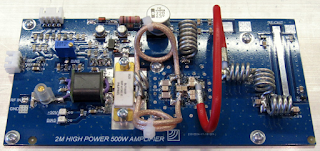No posts for 12 days! What's going on?
My plan was to get the front and rear panels cut by now but various things have got in the way, not least the fact that it is very cold in my garage and working indoors just seems to be more appealing. However, I have not been entirely idle...
I decided that I would invest in a bench drill (drill press to our American friends) as a prerequisite to drilling the large holes for the fans. While investigating how best to mount it, I decided that the old bench was in need of repair. It was built by my father, some time in the 1960s, using Handy Angle. UK readers of a certain age may well remember Handy Angle, slotted angle about 40mm a side, made from a strong aluminium alloy. The nearest thing to it these days is probably Dexion but I think that is only made in steel.
Anyway, the wooden work top, which I replaced perhaps 30 years ago was very much on its last legs after a few decades of sawing and drilling and generally bashing bits of metalwork. As luck would have it, I have recently had a new kitchen fitted and the very substantial tall cabinet end panels from the old kitchen cabinets would make an excellent worktop so that became the cunning plan. The panel is almost exactly the right length, 2140mm but at 600mm wide it is about 100mm deeper than the original workbench.
I thought it would be better to deepen the work bench rather than attempt to cut down the panel, so some more aluminium angle to extend the frame was needed. Of course Handy Angle is no longer available but in this case ordinary 40mm x 40mm x 3mm angle will do the job perfectly well - just drill M6 holes as needed, I ordered the necessary materials cut to length from Aluminium Warehouse a few days ago and they have just arrived as I am writing this missive, so I have work to do! I have a nice new vice (vise) and the aforementioned bench drill ready to go, once I finish the workbench.
Meanwhile, in the warmth of the shack, I have added a fair amount of new code to the controller and tidied up the wiring somewhat. Having now fixed the problem with correctly measuring heatsink temperature I've also been able to complete the temperature sensor and fan control logic, so the fans only come on to the extent that they are needed.
The control touchscreen layout has also received some attention, with various options such as variable brightness and beep level added to a nascent "settings" page. I expect more stuff to be added to that page in due course. There is now a timer which counts the number of seconds that the amplifier has been in Operate mode (50V supply on) and the number of PTT seconds (actually transmitting). It'll be interesting to see what the ratio is but I am guessing less than 20% TX time in normal use.
Well, I suppose I had better go and brave the Cumbrian chill (3°C as I type this) and get that workbench finished.













